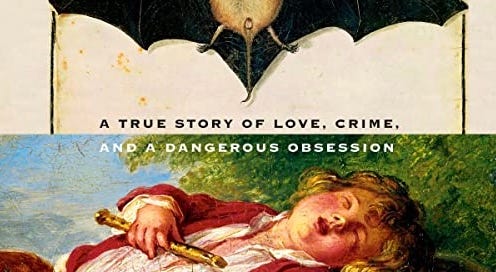BookLife Review by Carol O’Day: The Art Thief: A True Story of Love, Crime and a Dangerous Obsession (Micheal Finkel, author)
non-fiction, art history, art thefts, Renaissance art and artifacts, criminal investigation, forensic psychology, mother-son, narcissism, Switzerland, France, other Northern Europe countries
A short but juicy book, The Art Thief: A True Story of Love, Crime, and a Dangerous Obsession is the true story of an audacious, narcissistic and obsessed art thief who, together with his girlfriend, stole Renaissance art and artifacts from museums and cathedrals across seven countries–Switzerland, France, Germany, Austria, Netherlands, Denmark and Belgium–in broad daylight at a rate of approximately three thefts per month for years before getting caught. Stephane Breitweiser and Anne-Catherine Kleinklaus are perhaps the world’s most prolific fine art thieves. Breitweiser was obsessed with particular types of art. His tastes ranged from Flemish paintings, to silverwork buckles and chalices, to ivory carvings. He perused auction catalogs and visited museums until he connected with the beauty of a particular piece and promptly stole it.
His methods were astonishingly simple, usually involving a Swiss Army knife’s screwdriver attachment and an overcoat or, on occasion, the oversized tote carried by his girlfriend. Breitweiser rarely stole larger items, preferring pieces he could walk away with virtually unnoticed. The duo’s crimes relied heavily on the inadequate security and understaffing of the dozens of small museums, castles and the occasional church peppered all over Northern Europe which are filled with artistic, historic and cultural treasures. Operating from the mid-1990s until his arrest in 2001, the couple stole over 100 artworks worth over $2 billion. The thieves avoided detection for as long as they did because they did not sell or move any of the items stolen. Rather they stored them all in their locked attic rooms in his mother’s home in the Alsace region of France, for their own personal enjoyment.
Though Breitweiser was duped into confessing, he never implicated Anne-Catherine in his crimes. His mother, however, was convicted for her role in the destruction of most of the stolen artwork and artifacts. Many of the artifacts were recovered from a river near her home. The oil paintings never were recovered, and she claimed to have burned them to cause her son pain. Like her son, she served time in prison.
Finkel’s book is meticulously researched and documented. He conducted dozens of interviews and reviewed hundreds of documents over the period of more than a decade. Multiple psychologists examined Breitweiser as a part of the criminal proceedings and Finkel accessed these to paint a full picture of Breitweiser’s psyche or, more accurately, his psychopathology. Breitweiser was diagnosed by multiple professionals as obsessive and narcissistic. Bretweiser believed himself to be extraordinarily special and well-versed in his chosen art, uniquely able to appreciate it and therefore entitled to take, touch, hold and keep it.
Because The Art Thief is a work of non-fiction, the book is light on dialogue other than that which Finkel was able to obtain from court or investigative documents. As a result, the book at times reads more like a report or fairly dramatic history play rather than a novel. Nonetheless, Finkel takes the reader on the thieves’ rollicking and breathtakingly bold capers and moves the reader from country to country and museum to museum with startling detail of particular crimes as revealed by Breitweiser’s eventual confessions and the statements of the occasional eyewitness. The scope and scale of Breitweiser’s criminal undertaking, the audacity of it, makes for an eye-popping read. It was a scheme beyond what any run-of-the-mill fictional writer of an art thief story might conceive.
Support local bookstores and BookLife: Reviews for Readers by purchasing The Art Thief using the link below:





